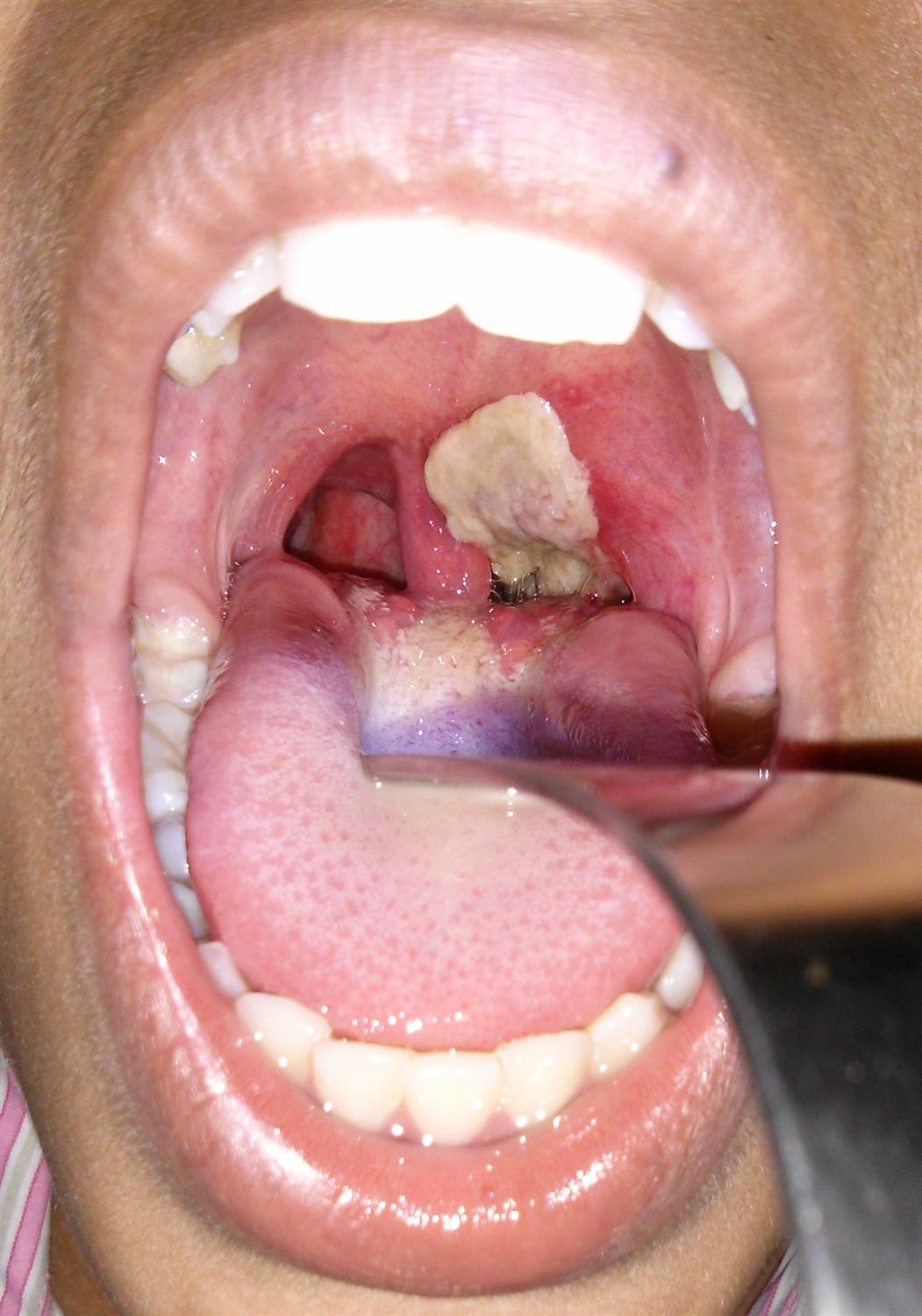
Snapshot
- A 4-year-old girl presents to the emergency room for a fever and sore throat. She recently visited Thailand for 2 months with her parents and had just flown back a couple of days ago. Her parents report that she has not had any of her recommended immunizations, as they have traveled all over the world. On physical exam, there is a grayish-white membrane covering her soft palate. When irritated by a tongue depressor, the membrane oozes with blood. She also has marked cervical lymphadenopathy and edema of the neck. She is immediately admitted for monitoring, antibiotics, and antitoxin.
Introduction
- Classification
- Corynebacterium diphtheriae
- aerobic gram-positive rod
- produces diphtheria toxin
- transmission
- respiratory droplets
- Corynebacterium diphtheriae
- Epidemiology
- demographics
- rare in the US
- more common in developing countries
- demographics
- Pathogenesis
- diphtheria exotoxin inactivates elongation factor (EF-2) via ADP-ribosylation
- inhibits protein synthesis, causing necrosis in respiratory, cardiac and central nervous system tissue
- affects mucous membranes, especially the respiratory tract
- exotoxin is encoded by β-prophage
- diphtheria exotoxin inactivates elongation factor (EF-2) via ADP-ribosylation
- Associated conditions
- diphtheria
- Prevention
- DTap vaccine
- vaccine against diphtheria, tetanus, and pertussis
- 5 doses before school-age, completed by 4-6 years of age
- Tdap vaccine
- booster vaccine at 11-12 years of age
- should also be given to pregnant mothers and those around them
- Td vaccine
- tetanus and diphtheria toxoid vaccine at 10-year intervals
- DTap vaccine
- Prognosis
- symptoms are insidious
- mortality is higher in young children, but generally good with prompt treatment
Presentation
- Symptoms
- fever
- sore throat
- malaise
- may have a croup-like cough
- Physical exam
- arrhythmias
Studies
- Bacterial culture
- gram-positive rods with blue and red granules (metachromically) seen on culture
- cysteine-tellurite agar (appears as black colonies)
- Löffler medium
- positive Elek test for diphtheria toxin
- gram-positive rods with blue and red granules (metachromically) seen on culture
- Making the diagnosis
- most cases are clinically diagnosed and confirmed with a culture
Differential
- Streptococcal pharyngitis
- distinguishing factor
- no pseudomembrane on mucous membranes
Treatment
- Medical
- diphtheria antitoxin
- indication
- all patients
- indication
- antibiotics
- indications
- all patients
- drugs
- erythromycin
- indications
- diphtheria antitoxin
- penicillin G
Complications
- Airway compromise from soft tissue swelling
- Heart failure from myocarditis
- Secondary bacterial infection (e.g., pneumonia)



